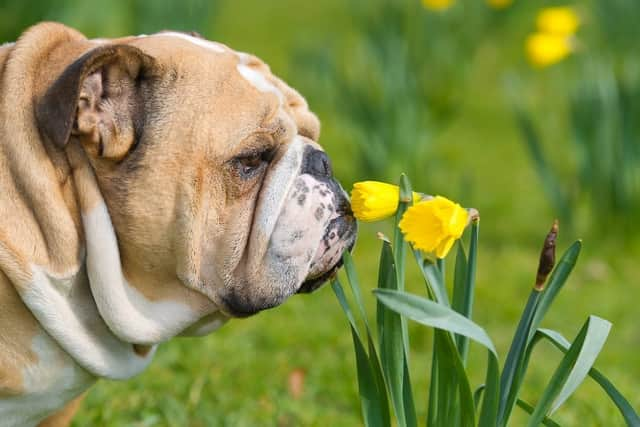Vets issue warning to pet owners over poisonous plants in Spring
This article contains affiliate links. We may earn a small commission on items purchased through this article, but that does not affect our editorial judgement.
and live on Freeview channel 276
After a long cold winter and plenty of snow, gardens are beginning to awaken and Spring feels as though it’s here at long last.
And with the weather hopefully warming up, many of our pets will spend more time outdoors.
Advertisement
Hide AdAdvertisement
Hide AdYou may already be aware that there are some plants – such as daffodils, lilies and laburnum – that can be dangerous to our four-legged friends. So what shrubs will give you a colourful and pet-friendly garden?“Time outdoors is great for pets and we should encourage outdoor activities as much as possible,” says PDSA Vet Olivia Anderson-Nathan.


“New spaces for them to explore, sniff and play will encourage them to stay happy and healthy.
“Owning a pet doesn’t mean you can’t have a beautiful garden – you’ll just need to do a bit more planning to steer clear of any plants that can be harmful.”
African Daisies look exotic, will brighten up your garden, and are fairly resilient. Crocuses are a good alternative to daffodils, but avoid colchicums, also known as Autumn crocuses, which can be poisonous.Ferns and African violets are safe for dogs, while sunflowers and snapdragons are harmless for cats.
Advertisement
Hide AdAdvertisement
Hide AdSpeak with your garden centre as the Horticultural Trade Association has a code of practice that most garden centres adhere to. The code labels plants A – poisonous, B – Toxic if eaten and C – Harmful if eaten.


Plants in any of these categories are best avoided for a pet-friendly garden.
“Just a small amount of time researching can prevent a large vet bill,” says Olivia. “There’s no reason why you can’t have the best of both worlds – a great looking garden that’s also safe for your pet to enjoy.”
Olivia’s top plants to avoid are:
Daffodils – all parts of the plant can cause problems, but even drinking the water from a vase of daffodils can make a pet ill.Laburnum – just chewing laburnum bark or twigs can affect a dog.Allium species – including leeks, spring onions and wild garlic.Bluebells – all parts of the plant are poisonous to dogs.Lilies – all parts are potentially lethal to cats including the pollen, as a cat may lick this off their fur after brushing against the plant.Oak – the buds have a high concentration of a poison called ‘tannic acid’ but not all dogs react to it.Rhododendrons – all parts of the plants are toxic. Commonly seen in parks.


Advertisement
Hide AdAdvertisement
Hide AdSigns your pet may have been poisoned vary depending on the type of plant. This can include vomiting, diarrhoea, drooling, drowsiness or fitting, so it’s important to go to your vets for advice if your pets shows any of these signs.
More information about plant and garden safety can be found on PDSA’s website: www.pdsa.org.uk/safergardens.